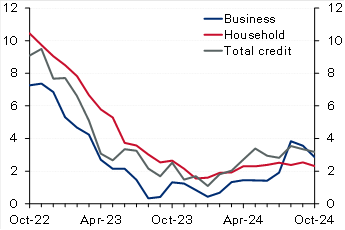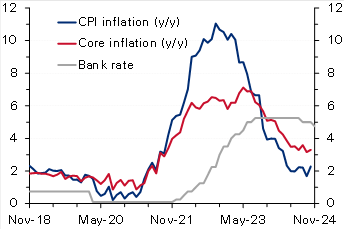Winston Churchill said, “The farther back you can look, the farther forward you are likely to see.”
The brilliant baseball player and coach Satchel Paige seems to disagree with Churchill when he said, “Don’t look back. Something might be gaining on you.”
Marc Bloch, in The Historian’s Craft (French: Apologie pour l’histoire), wrote that history is obviously a backward-looking discipline, but warns against the obsession with origins.
Edward Bellamy’s utopian time travel novel, Looking Backward: 2000–1887, is another example of this thought. His protagonist has a prophetic dream in 1888 of the United States in the year 2000. The book critiques the 19th-century U.S. through the lens of the future.
Alain Badiou looks back from the Neolithic period to today, describing it as a “time of crisis.”
…everybody thinks there is a crisis. Is philosophy capable of seizing hold of this crisis, while maintaining its fundamental aims? That is obviously my position I certainly recognize that humanity is in crisis, which I take to be the final spasm of the whole Neolithic period, the period of classes, of private property, of the power of the state, of technology, and so on. This started in Egypt and China six or seven thousand years ago and now this ends up in what is after all a very difficult situation to control. It is the outcome of everything that this gigantic period has swept along with it. This includes the status of truths, which today are perhaps a bit domesticated by an uncontrollable situation of predation and destruction.
After all, technology is tributary to science; everything is supposed to be mediated by information, even aesthetics; love has become calculable because you can calculate scientifically the person who best matches with you. All this indeed is at the origin of a gigantic crisis in philosophy. My own position is that we can be in a position of active resistance to what is happening, while holding onto the original categories of philosophy. A form of resistance that nevertheless consists in dramatically changing into something else. We should not hope to reform the world such as it is: I think this is completely impossible. Of course, one can try to do the best one can, but little by little everyone recognizes that the world we live in is catastrophic. And that is certainly true. It is catastrophic because it is the end—and here we should think big—of several millennia. It is not just the end of the nineteenth and twentieth centuries; it is the end of the world of social classes, of inequalities, of state power, of the subservience to science and technology, of private property colonizing everything, of senseless and criminal wars.
Alain Badiou, Badiou by Badiou, translated by Bruno Bosteels, Stanford University Press, 2022, pages 26-27.
Badiou argues that the world has always been threatened by catastrophe and philosophy is its reaction.
Let us recall that Socrates and Plato were people who already intervened at the end of the Greek city. They too found themselves in a world threatened by catastrophe: they did not live in a stable and established world at all. That ends with Alexander the Great, who brings order to all this in the form of an imperial creation, and finally with the Romans and their monster of a state the likes of which had never been seen before. The Greek city and Greek democracy thus ended in the imperialism of ancient Rome. Thus, we may also find inspiration in Plato in this last regard. Plato is the first complete philosopher, but he already lives in a time of crisis. Of course, Athens was very famous and celebrated, but at the same time it was already corrupted and fragile. During Plato’s own lifetime, not to mention Aristotle, Macedonian imperialism is already present. Aristotle was Alexander the Great’s first tutor; he was a prototype of the corrupted and, moreover, the inventor of academic philosophy!
Similarly, if we take the greatest philosophers—Plato, Descartes, Hegel—we again find the same type of figure. Hegel is obviously the philosopher caught up in the French Revolution and its fundamental transformations; Descartes, for his part, is caught up in the emergence of modern science. All these philosophers are caught up in considerable shakeups of their time, in the fact that an old society is on the verge of dying and the question of what is going to appear that is new. We too find ourselves in the same situation: we must continue along these lines, by taking inspiration from what those philosophers did. Thus, they considered that the moment had come to work on a renewed systematicity of philosophy, because the conditions had changed. So, based on the conditions as they existed, it was time to propose an innovative way out of the existing constraints, an individual and collective liberation. From this point of view, we can find inspiration in the great classical philosophical tradition: we need not reject it, nor claim that all this is finished and find solace in an insurmountable nihilism, nor adopt the Heideggerian critique of metaphysics going back all the way to Plato. All this is pointless, and finally becomes incorporated into the disorder of the world. On the contrary, we must hold onto the fact that philosophy has always been particularly useful, possible, and necessary in situations of grave crisis for the collective, and from there pursue the work of our great predecessors.
Alain Badiou, Badiou by Badiou, translated by Bruno Bosteels, Stanford University Press, 2022, pages 29-30.
Contrast “What was the Neolithic world that led to the unleashing of technology?” (Badiou, Badiou by Badiou, page 25) and “Yesterday don’t matter if it’s gone.” (The Rolling Stones, “Ruby Tuesday”). Perhaps we can conclude that wisdom is knowing when the past is useful in understanding the future.

